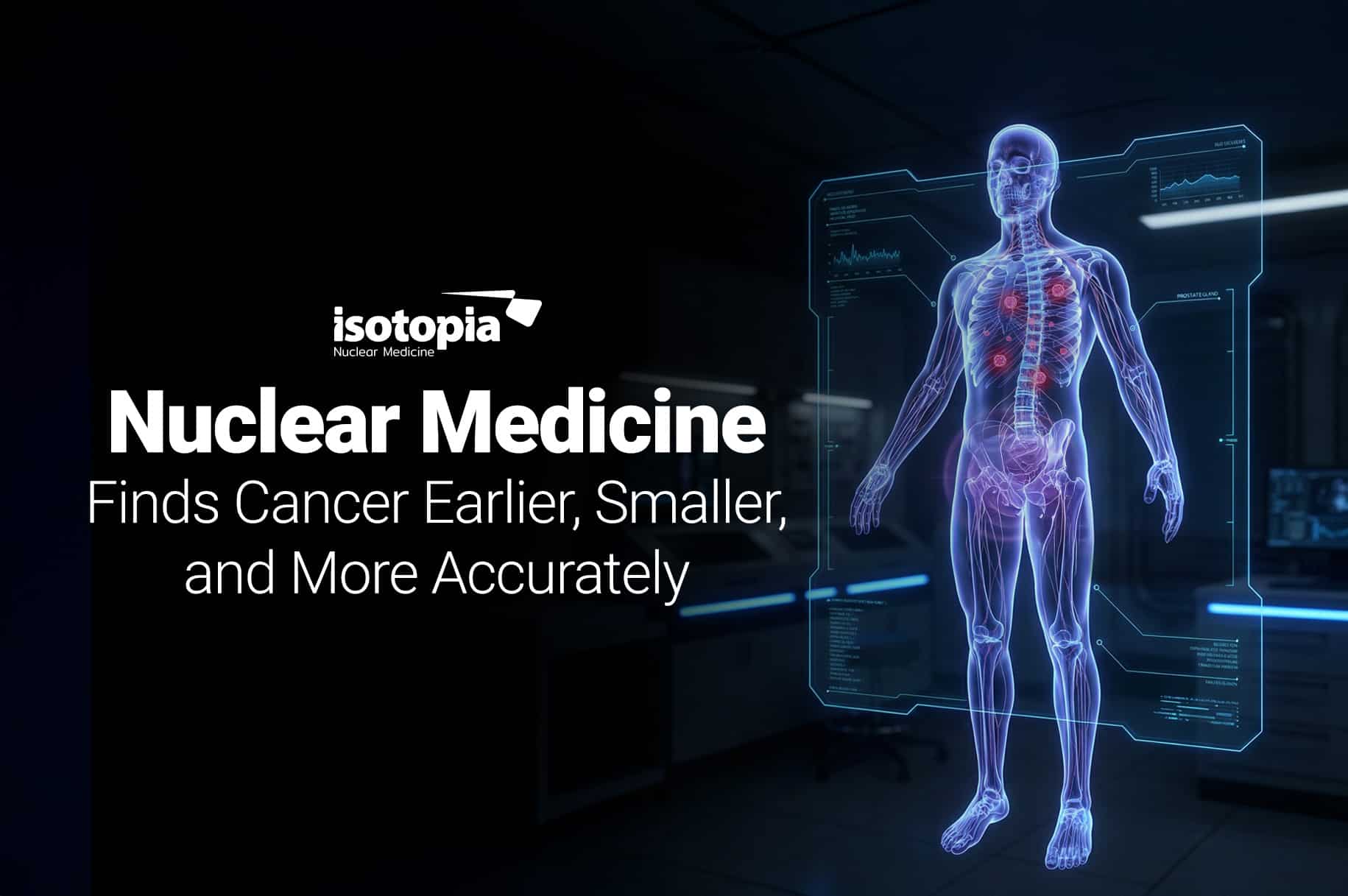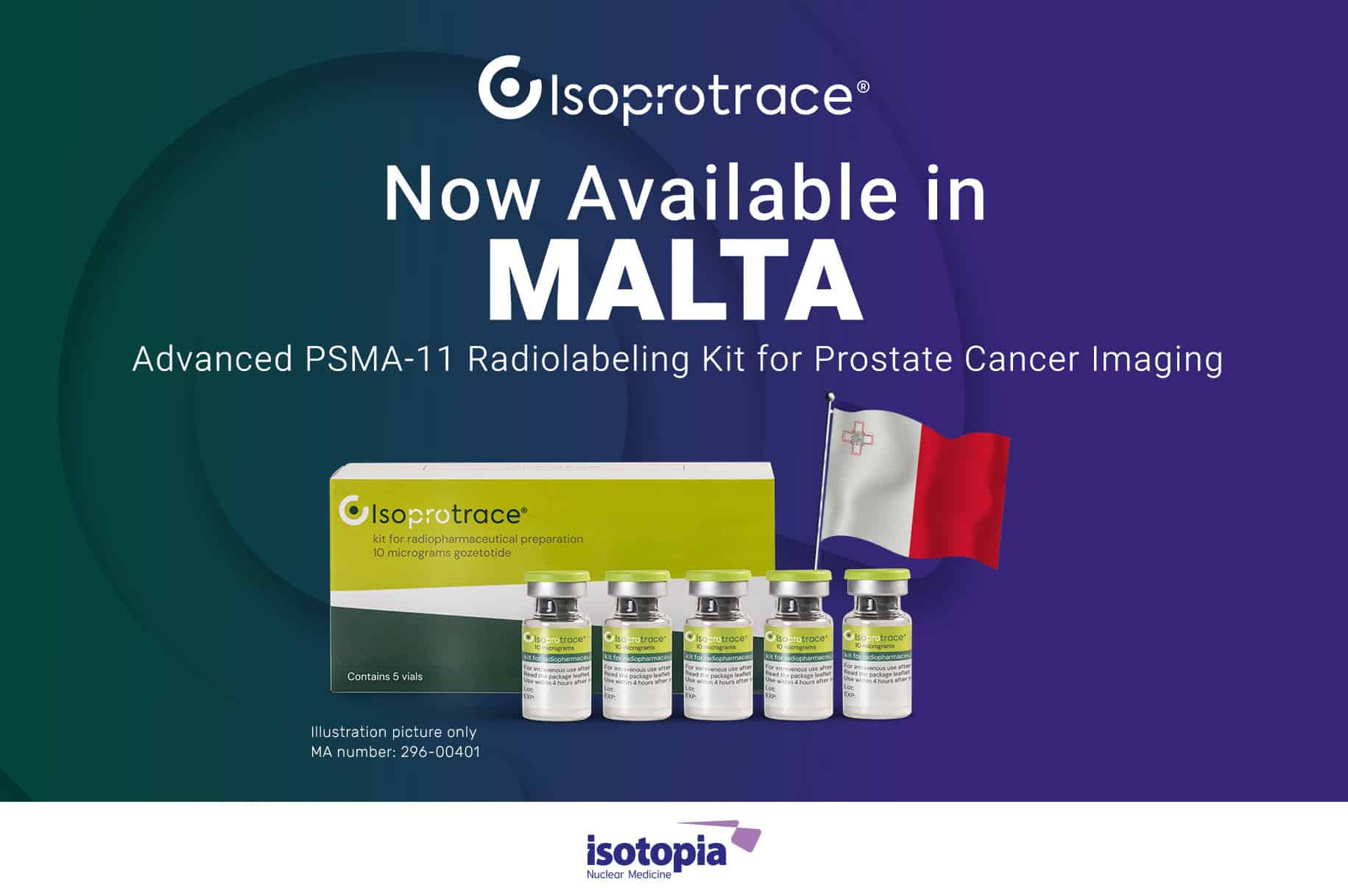Prostate cancer remains one of the most common malignancies among men, and for many, the challenge lies in managing biochemical recurrence (BCR)—the rise of prostate-specific antigen (PSA) levels following initial treatment. In this context, the advent of PSMA-11 positron emission tomography-computed tomography (PET/CT) has revolutionized diagnostic capabilities, offering significant advantages over traditional imaging methods.
PSMA 11- Setting a New Standard in Prostate Cancer Imaging
According to the American Urological Association (AUA), PSMA-PET/CT exhibits greater sensitivity and specificity for detecting biochemically recurrent prostate cancer compared to conventional imaging modalities.[1] This enhanced diagnostic power is crucial for timely and accurate management of the disease.
Impact on Clinical Management
The clinical utility of PSMA-11 PET/CT in prostate cancer patients experiencing biochemical recurrence (BCR) extends beyond the benefits outlined in the guidelines. Multicenter trials, such as the IAEA-PSMA study, have shown that PSMA PET/CT results influenced therapeutic decisions in 56.8% of BCR patients, thus highlighting its essential role in guiding treatment pathways.[2]
Effective at Low PSA Levels
One of the outstanding features of PSMA-11 PET/CT is its ability to detect recurrent disease even at low PSA levels. In a study by Haidar et al., the detection rate for PSMA-PET/CT was 50% for PSA levels <0.2 ng/mL, which increased with higher PSA levels, reaching 90.9% for PSA levels between 4-10 ng/mL.[3] This capability allows for earlier detection of recurrent disease, which is crucial for improving patient outcomes.
Superior Diagnostic Performance
The diagnostic performance of PSMA-11 PET/CT is also superior to other imaging modalities. A study comparing PSMA-11 PET/CT with multiparametric MRI (mpMRI) found that PSMA-11 PET/CT had a higher sensitivity (0.89 vs. 0.72) and negative predictive value (0.79 vs. 0.59) for detecting intraprostatic radiorecurrent prostate cancer.[4] When combined with mpMRI, the sensitivity and negative predictive value were significantly higher than mpMRI alone, suggesting a complementary role for these imaging modalities.
Outstanding Detection of Metastases
PSMA-11 PET/CT excels in identifying lymph-node and bone metastases compared to other tracers, such as C-acetate PET/CT. Research conducted by Regula et al. found that PSMA-PET was able to successfully identify more metastatic sites than acetate-PET, thus demonstrating its superior diagnostic accuracy.[5]
Furthermore, it was found that PSMA-11 PET/CT outperforms other PET tracers such as 18F-fluciclovine and 11C-choline. Guidelines from the Society of Nuclear Medicine and Molecular Imaging (SNMMI) and the European Association of Nuclear Medicine (EANM) concur that PSMA-ligand PET/CT exhibits superior accuracy for localizing recurrent prostate cancer compared to these tracers.[6]
Conclusion
PSMA-11 PET/CT offers significant benefits in the management of prostate cancer patients with BCR thanks to its superior sensitivity and specificity, its ability to detect malignancies at lower PSA levels, and its proven diagnostic performance compared to conventional imaging and other PET tracers. These advantages facilitate more accurate staging and localization of recurrent disease, thus enabling tailored salvage therapy and potentially improving patient outcomes.
References
1. Salvage Therapy for Prostate Cancer: AUA/ASTRO/SUO Guideline Part I: Introduction and Treatment Decision-Making at the Time of Suspected Biochemical Recurrence After Radical Prostatectomy.
Morgan TM, Boorjian SA, Buyyounouski MK, et al.
The Journal of Urology. 2024;211(4):509-517. doi:10.1097/JU.0000000000003892.
2. Diagnostic Performance and Clinical Impact of Ga-Psma-11 PET/CT Imaging in Early Relapsed Prostate Cancer After Radical Therapy: A Prospective Multicenter Study (IAEA-PSMA Study).
Cerci JJ, Fanti S, Lobato EE, et al.
Journal of Nuclear Medicine: Official Publication, Society of Nuclear Medicine. 2022;63(2):240-247. doi:10.2967/jnumed.120.261886.
3. Ga-Psma PET/CT in Early Relapsed Prostate Cancer Patients After Radical Therapy.
Haidar M, Abi-Ghanem AS, Moukaddam H, et al.
Scientific Reports. 2022;12(1):20500. doi:10.1038/s41598-022-24688-3.
4. Diagnostic Performance of 68Ga-Psma-11 PET/CT Versus Multiparametric MRI for Detection of Intraprostatic Radiorecurrent Prostate Cancer.
Light A, Lazic S, Houghton K, et al.
Journal of Nuclear Medicine: Official Publication, Society of Nuclear Medicine. 2024;65(3):379-385. doi:10.2967/jnumed.123.266527.
5. Comparison of Ga-Psma-11 PET/CT With C-Acetate PET/CT in Re-Staging of Prostate Cancer Relapse.
Regula N, Kostaras V, Johansson S, et al.
Scientific Reports. 2020;10(1):4993. doi:10.1038/s41598-020-61910-6
6. PSMA PET/CT: Joint EANM Procedure Guideline/SNMMI Procedure Standard for Prostate Cancer Imaging 2.0.
Fendler WP, Eiber M, Beheshti M, et al.
European Journal of Nuclear Medicine and Molecular Imaging. 2023;50(5):1466-1486. doi:10.1007/s00259-022-06089-w. Copyright License: CC BY

Haim Golan
MD MSc
Chief Medical Officer
Medical Adviser
Isotopia Molecular Imaging LTD





